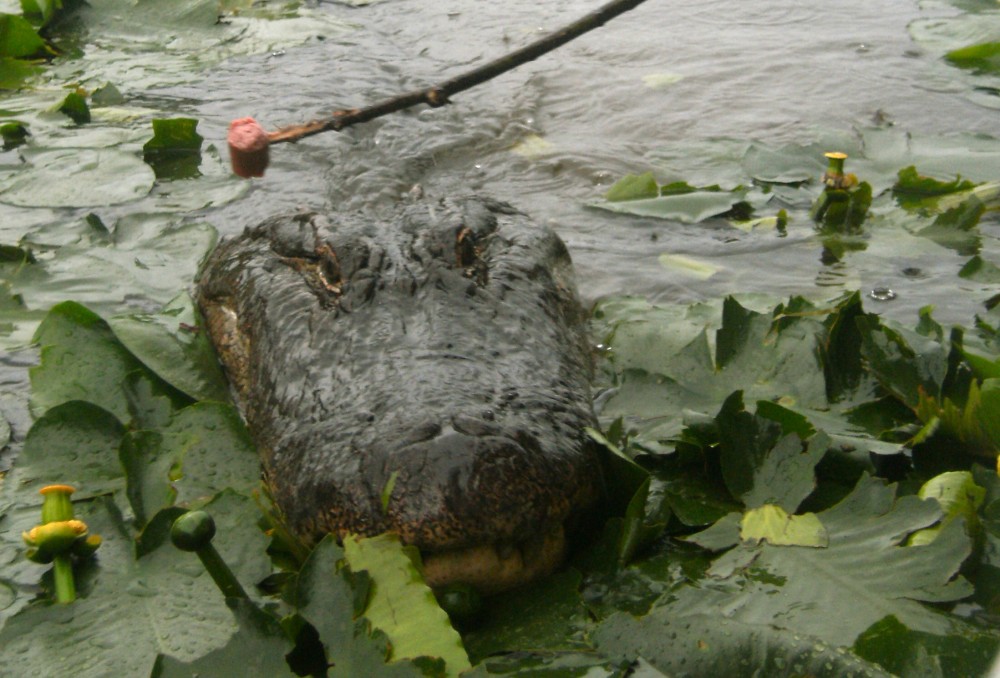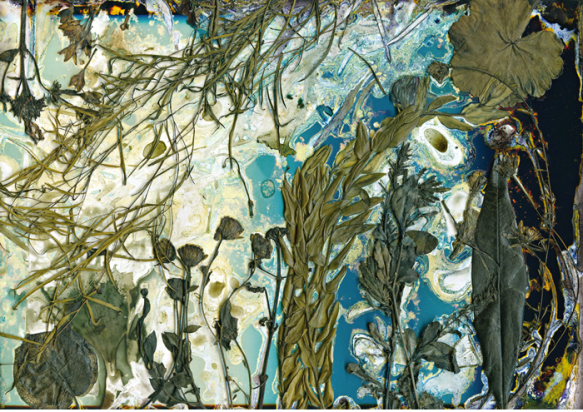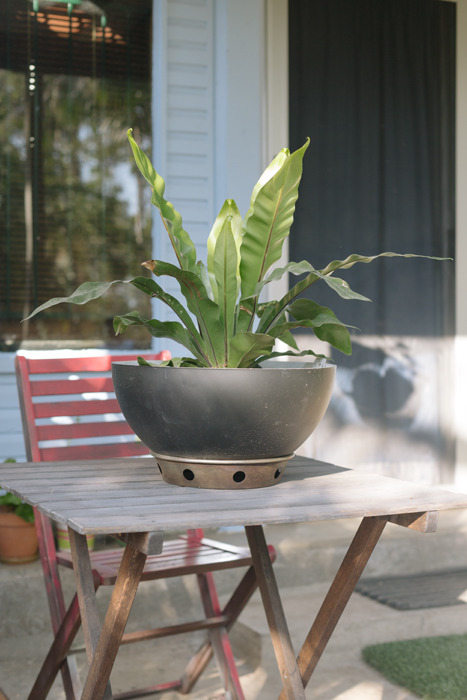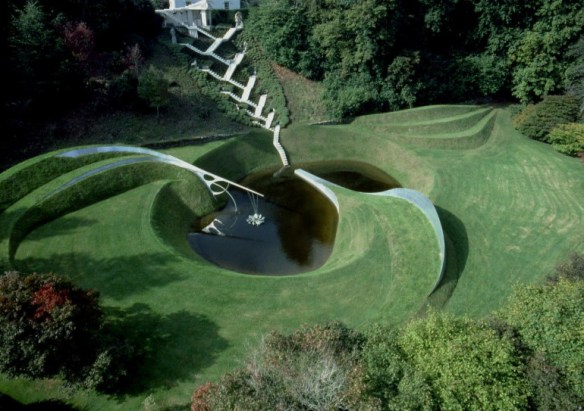Butterflies and Perfumes, Beth (Ferny Hills) (2015), Renata Buziak, biochrome
From Beth’s Garden, (2014) Lynette Letic
Habitat: Artworks and Stories of Pine Rivers Gardens was a gorgeously sprawling project with a deceptively simple and positive goal: to use art and photography to look at gardeners and their relationship with their gardens. Over a period of almost two years, photographic artists Renata Buziak and Lynette Letic collaborated with many participants on Habitat, and they invited the public to come along.
Culminating in a beautiful, thought-provoking exhibition seen at Moreton Bay Region’s Pine Rivers Art Gallery during the months of June and July, Habitat was a focal point not only for seeing Letic’s photographs and Buziak’s biochromes, but also as a site for artists’ and gardeners’ talks, and for workshops with topics ranging from replacing weeds with native plants to the role creeks play within the urban landscape.
Habitat: Artworks and Stories of Pine Rivers Gardens, installation shot
Habitat informed us that gardens are indeed places for “living things to live… a place to find food, shelter, protection and space to procreate.” (wikipedia) They nurture the plants, animals and people that enter them on both a micro- and macroscopic scale. The air, soil, water and living beings surrounding them also benefit from any garden’s presence. Green space, photosynthesis and carbon dioxide exchange providing oxygen, and other life processes are initiated and maintained by a garden. Gardens fill in gaps, provide biodiversity and create natural networks and strengthening sanctuary to migrating species from butterflies to birds.
And so generative networking was at work in Habitat. The project supported community relationships and dialogue with the public, and gave gardeners a voice with which to share personal insight about the thoughtful care and creativity invested in their spaces. Buziak and Letic brought their creative skills and knowledge into play to establish an archival portrait of the geographic area at a particular point in time, as well as to make unique works of art evidencing that amazing collaboration called “life on Earth.”
Initially, the artists together visited eleven privately owned gardens in the Moreton Bay Region. Each garden differed in style, plant choices and size, (from a small suburban garden to huge properties). Gardeners were interviewed and spoke of levels of meaning: food to eat, spiritual sanctuary, beauty, seeds and plants passed down through families, special places within each garden, propagating native plants, or favourite animal species attracted to their work.
*****
Biochrome of Mandy’s Garden (2015), Renata Buziak
Buziak has been exploring and perfecting the process of creating biochromes for over ten years. She’s coined the term based on the conjunction of bio (meaning of or relating to life) and the Greek word khrōma (colour). As a PhD candidate at Queensland College of Art, Griffith University, she’s been making biochromes to investigate traditional medicinal plants on Minjerribah (North Stradbroke Island) with the guidance and support of members of the Quandamooka community.
For Habitat, she created each biochrome by selecting plants from a specific garden, seeking to capture its essence, look and feel. Placing selected plants upon a chemically prepared photographic plate primed to initiate organic chemical reaction with living flora, Buziak thus began the biochrome process. For about six weeks’ time, unseen and unmediated, microbial activity brewed colours and patterns, stains and ghostly shadows, resulting in a stunning array of partly surreal, yet starkly truthful images of chemical histories that were then scanned and printed.
Seasons and Colours, Venus and John (Mt. Glorious) (2015), Renata Buziak, biochrome
Food and Inspiration, Wendy (Samford) (2015) Renata Buziak, biochrome
Using nature’s processes and cycles – feeding, growth, decay and death – each biochrome is an experiment: a “painting” based on a technology of the artist’s own invention, employing fundamental, biological interactions that ultimately remain mysterious. And, “therefore,” she says, “in my biochromes, I record the colour of life. It’s photography, but opens into this other realm, using both analog and digital processes, and, for Habitat, has been an exciting way to represent the gardens.”
*****
Letic is an emerging photographer currently finishing up her Honours year at Queensland College of Art. Her photographs for Habitat introduced her to approaching her subject at a slower pace. “Initially, we met with the gardeners for two to four hours, got to know them and spent time really taking in each garden as a unique space.” She found that in many cases she was drawn to return and meet again with people, so that her portraiture work honestly echoed each gardener’s personality. “I found many people were more relaxed during our second visits, and after conversation and some thought, the images were more considered and more natural.”
Mandy (2015), Lynette Letic
Elizabeth and Paul’s House (Closeburn) (2015), Lynette Letic
Her Honours work focuses on the public display of community events in regional Queensland, and she is interested in “how photography can be used to engage with community” as well as “how community is performed for the camera.” Habitat, she says, “was different than other projects I’ve worked on as it was challenging working with many people, and on short term engagements. Having the chance to return for more time was great for this reason, and it also allowed us to experience the gardens during a different season. Meanwhile, working in collaboration – particularly with Renata, as our practices and visual work differ in many ways – was a new and enriching experience.”
In Touch with the Earth, Elizabeth and Paul (Closeburn) (2015), Renata Buziak, biochrome
In Habitat, Buziak composed her biochromes with a nod to the process-oriented abstraction of painters like Jackson Pollack and John Olsen. In Touch with the Earth, Elizabeth and Paul (Closeburn), 2015, with its sinewy, leafy graphics, recalled the dynamic gestural attacks with paint made everyday visual language by the American abstract expressionist. This work also connected me with Olsen’s use of simultaneously horizontal (landscape with horizon) and overhead (bird’s-eye map from above) points of view. A metaphorical transformation of leaves and branches into changes in terrain, altitude, and snaking, doubling-back of creeks and rivers, also confronted the eye with a frontal mountain of flora. Strange and wonderful remembering that much of what I saw in In Touch with the Earth was the product of chance.
Letic’s photographs were more immediately accessible as images, not only because they were documentary and declarative, but mostly due to an empathic connection with her subject – whether a person, a trio of purple flowers or spiraling concrete pavers set within gravel. An aura of trust and simplicity was evident in all of the portraiture work: I was continually moved whenever I looked at the photographs of Mandy, 2015 (with her chook) and Diane, 2015. Letic’s double-portraits of couples that garden together were further evidence of how a connection to the land created intimacy and strength. There is no easy way to communicate this sort of quiet emotion in a photograph: it can only emerge from careful observation, gaining a subject’s trust, and valuing the present moment’s gifts.
*****
While I was thinking about this article, I searched my mind for another artist’s use of gardens to compare with Habitat. Monet’s gardens at Giverny popped into my head, and I began to muse on the changing expectations we have for art and its essential role structuring social interaction. Looking at art, talking about it, and speaking through it are all very important actions we effect as human beings (as opposed to other animals).
Monet in his garden at Giverny, 1922
The changing nature of gardens throughout history has transformed and reflected cultural eras and assumptions. For instance, compare Jules Hardouin-Mansart’s celebration of the Enlightenment at Versailles with the contemporary Scottish landscape architect and theorist Charles Jencks’ Garden of Cosmic Speculation – They come to mind as occupying differing points along the spectrum of western gardening aesthetics. Each is nonetheless similar in their desire to create ‘a world’ with plants, sculpture and landscaping, and to present that world as an idea and a mirror — and as art.
Jules Hardouin-Mansart’s Orangerie at Versailles (completed 1686)
Charles Jencks’ Garden of Cosmic Speculation (commenced 1986)
To return to Monet and the Impressionists — they made paintings that spoke of working in pleine air, and they used paint itself to reflect the ephemeral nature of sight, in radical opposition to the polished illusions of the Paris Salon. Their use of colour and factured daubs of scintillating paint was a precursor to scientific investigations into how the eye sees and the mind perceives.
One need not be a connoisseur to feel the buzzing, atmospheric visual swoon of Water Lilies’ large panels. In their time, these paintings celebrated the personal, the subjective and the materiality of paint as authentic — and were radical and rebellious.
Water Lillies (1914-1926), Claude Monet
*****
What Monet himself might find challenging about Habitat would be that extra-personal experience, the networking and sharing of information and expression coalescing into an artwork called Habitat, was made up of artworks, people, plants, gardens, birds, rocks, stories, roads, thoughts, thunderstorms and more.
Habitat functioned within a loosely defined framework – or form – that we now think of as “relational aesthetics.” That is, to envision that “the role of artworks is no longer to form imaginary and utopian realities, but to actually be ways of living and models of action within the existing real, whatever the scale chosen by the artist.” (Nicolas Bourriaud)
Donna from Kumbartcho Sanctuary and Nursery talks about native plants at the gallery
While each of Habitat’s gardens began within the personal, Buziak’s vision for Habitat successfully expanded upon the personal to grow a network of like-minded people, bringing under one umbrella many aspects of gardening, nature, community and art. We have come a long way since the Impressionists rebelled against the painting aesthetic of the Paris Salon. Perhaps Habitat uses art and gardens as an eye-opener — a call to evolve, and to use our human nature to strengthen all of nature.
http://pineriversgardens.tumblr.com/
http://www.moma.org/collection/works/80220
https://en.wikipedia.org/wiki/Gardens_of_Versailles














